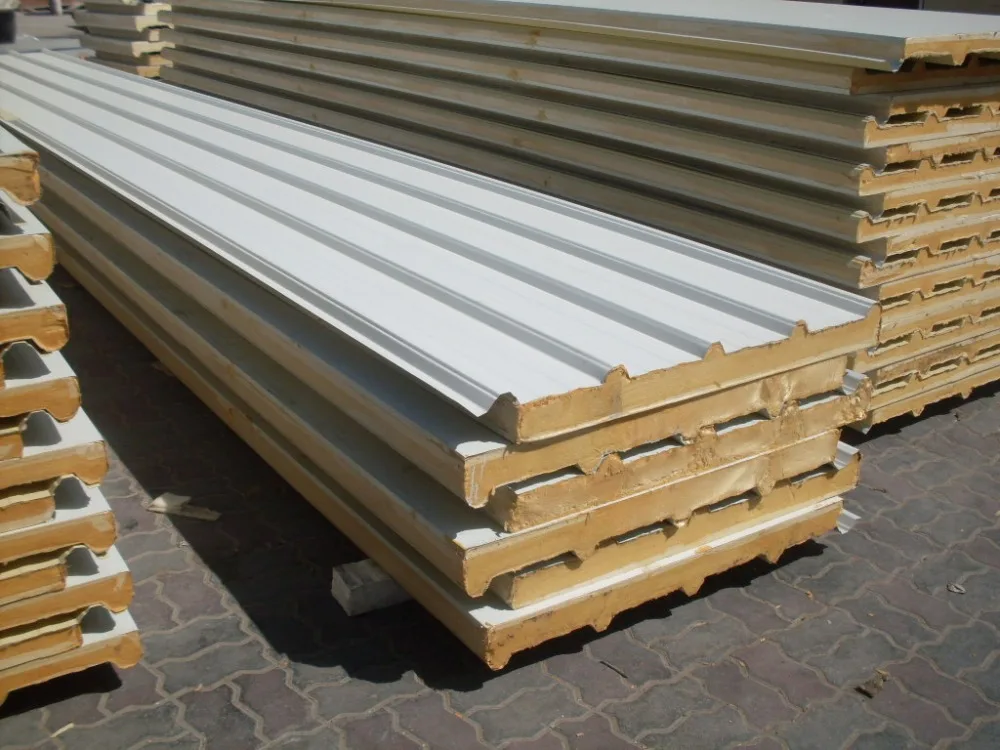For the past half a century insulated sandwich panels have been used regularly in the commercial construction sector of Australia. These panels are made, as the name would suggest, by sandwiching 3 different elements together. In these cases, you get steel skins for the exterior and you have an inner core as well. These exterior steel skins have compressive and high tensile strength. The inner core is equipped with extreme shear strength. When these qualities combine you get a building material that lasts much longer and is lighter compared to the others of the ilk that are used conventionally.

The cores that are used in these cases
The cores that are used the most to build the insulated sandwich panels may be enumerated as below:
Keep in mind that you would not get PUR (polyurethane rigid foam) panels in Australia as they are not made or used over here. Companies that make expanded polystyrene use styrene monomer. In this case, they use a process of polymerization. This process produces polystyrene beads that are spherical and translucent. They are normally as big as sugar granules.
How are these panels made?
During this particular process a hydrocarbon, at low boiling point, gets added to the raw material being used. The companies that make insulated sandwich panels from such materials normally use pentane gas in these cases.
This helps with the expansion that happens at the time of processing, which is done after the initial stage gets over.
They also use a flame retardant in these cases. In the case of expanded polystyrene, they normally use hexabromocyclododecane. The hexabromocyclododecane gets added at the time when the polymerization is being done. It also gets retained in the polymer matrix of the finished product.
The insulated sandwich panels made using polyisocyanurate are created by using foam instead of other manufacturing processors.
What are the advantages of these products?
These panels can make a significant reduction in the quantity of energy that you need to keep your buildings with a temperature range that can be deemed as comfortable. They are light and need little maintenance as well.
You can recycle and reuse them as well. They use insulants that never deplete the ozone layer in the area. As much as 30% of the exterior steel skins can be made from materials that have been recycled.
Conclusion
Compared to the framed methods of construction which are used on a standard basis in the industry, the insulated sandwich panels bring down the amount of landfill generated. They also provide insulation continuously.
This makes sure that you either do not need thermal bridging or need very little of the same. The level of insulation that they provide is not affected by the likes of compression, vermin, water vapour, and rot.
They also reduce the rates of infiltration and air leakage. They bring down the time taken for construction by a significant margin as well.

The cores that are used in these cases
The cores that are used the most to build the insulated sandwich panels may be enumerated as below:
- expanded polystyrene
- polyisocyanurate
- expanded polystyrene fire resistant
- mineral fibre
- extruded polystyrene
- EPS phenolic hybrid (syntactic)
Keep in mind that you would not get PUR (polyurethane rigid foam) panels in Australia as they are not made or used over here. Companies that make expanded polystyrene use styrene monomer. In this case, they use a process of polymerization. This process produces polystyrene beads that are spherical and translucent. They are normally as big as sugar granules.
How are these panels made?
During this particular process a hydrocarbon, at low boiling point, gets added to the raw material being used. The companies that make insulated sandwich panels from such materials normally use pentane gas in these cases.
This helps with the expansion that happens at the time of processing, which is done after the initial stage gets over.
They also use a flame retardant in these cases. In the case of expanded polystyrene, they normally use hexabromocyclododecane. The hexabromocyclododecane gets added at the time when the polymerization is being done. It also gets retained in the polymer matrix of the finished product.
The insulated sandwich panels made using polyisocyanurate are created by using foam instead of other manufacturing processors.
What are the advantages of these products?
These panels can make a significant reduction in the quantity of energy that you need to keep your buildings with a temperature range that can be deemed as comfortable. They are light and need little maintenance as well.
You can recycle and reuse them as well. They use insulants that never deplete the ozone layer in the area. As much as 30% of the exterior steel skins can be made from materials that have been recycled.
Conclusion
Compared to the framed methods of construction which are used on a standard basis in the industry, the insulated sandwich panels bring down the amount of landfill generated. They also provide insulation continuously.
This makes sure that you either do not need thermal bridging or need very little of the same. The level of insulation that they provide is not affected by the likes of compression, vermin, water vapour, and rot.
They also reduce the rates of infiltration and air leakage. They bring down the time taken for construction by a significant margin as well.




.jpg)

0 Comments